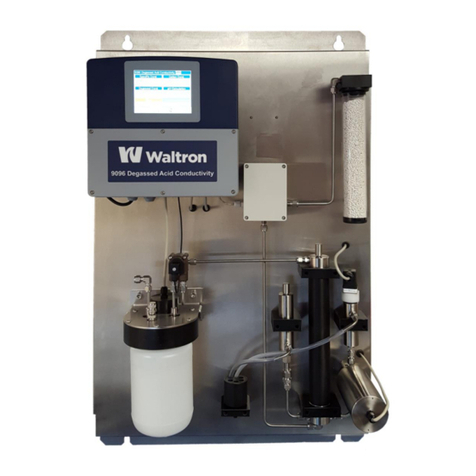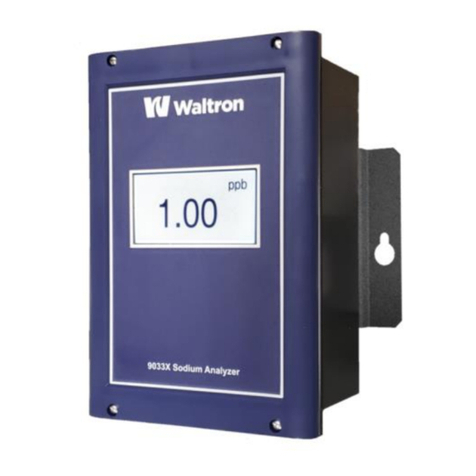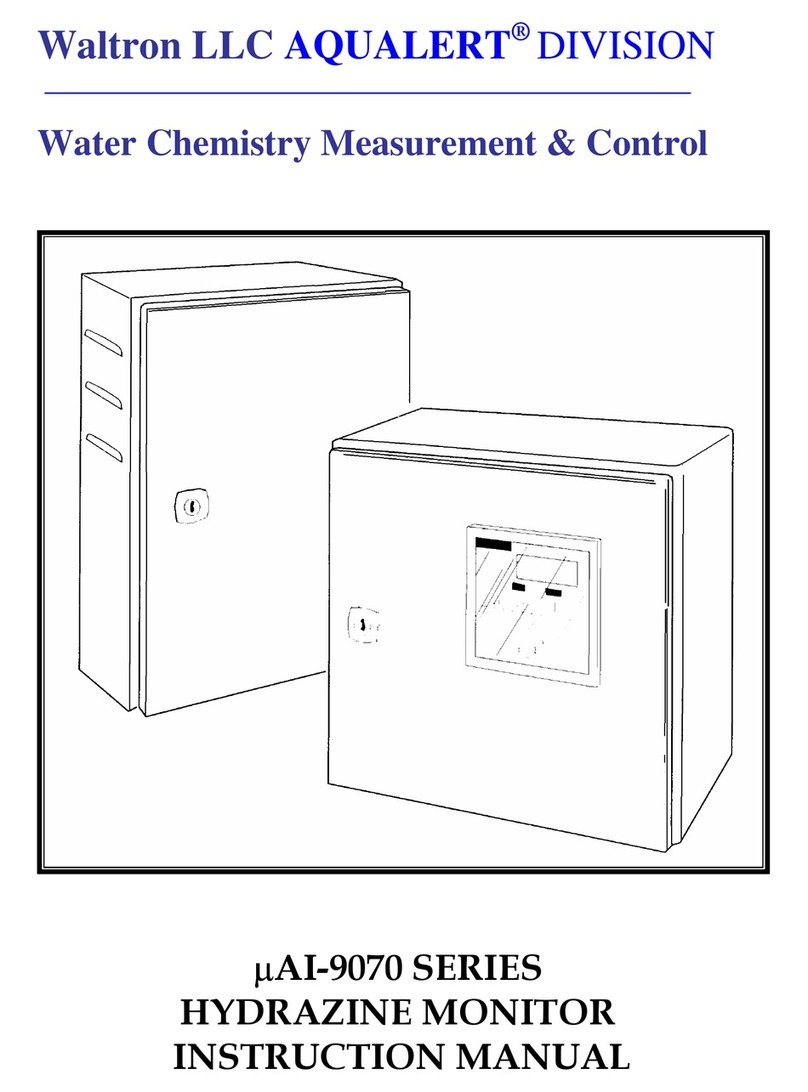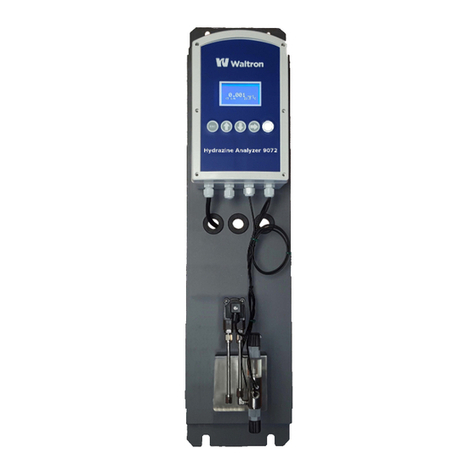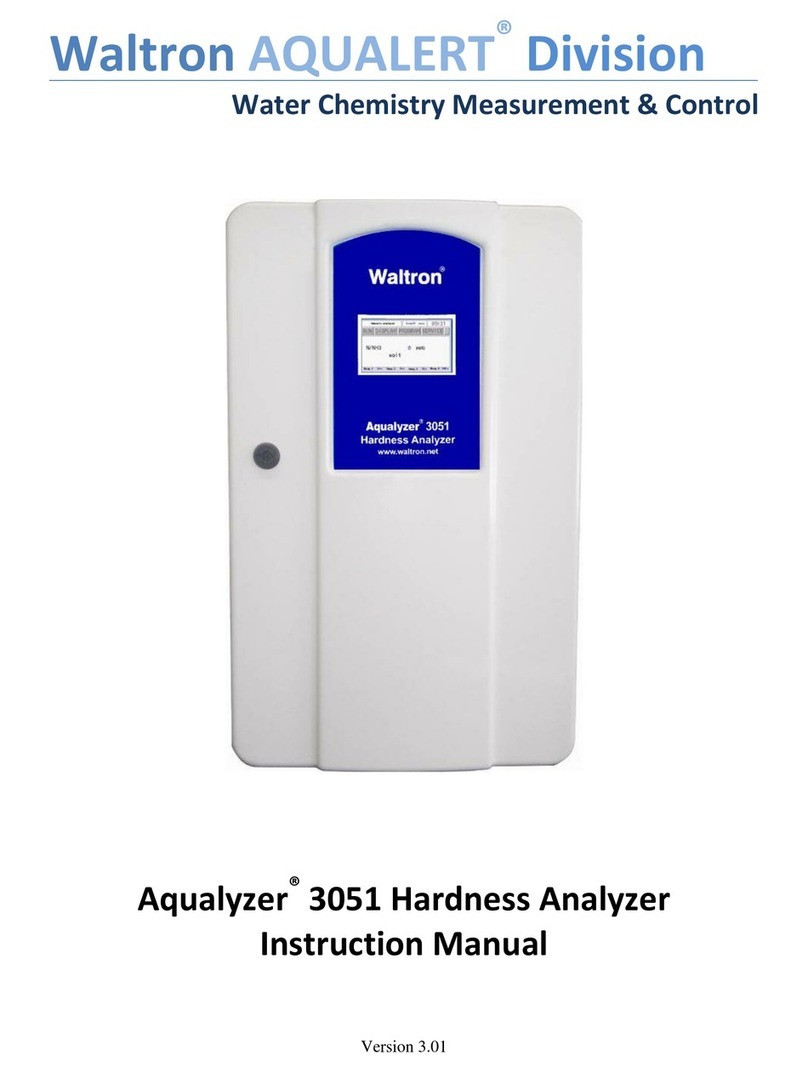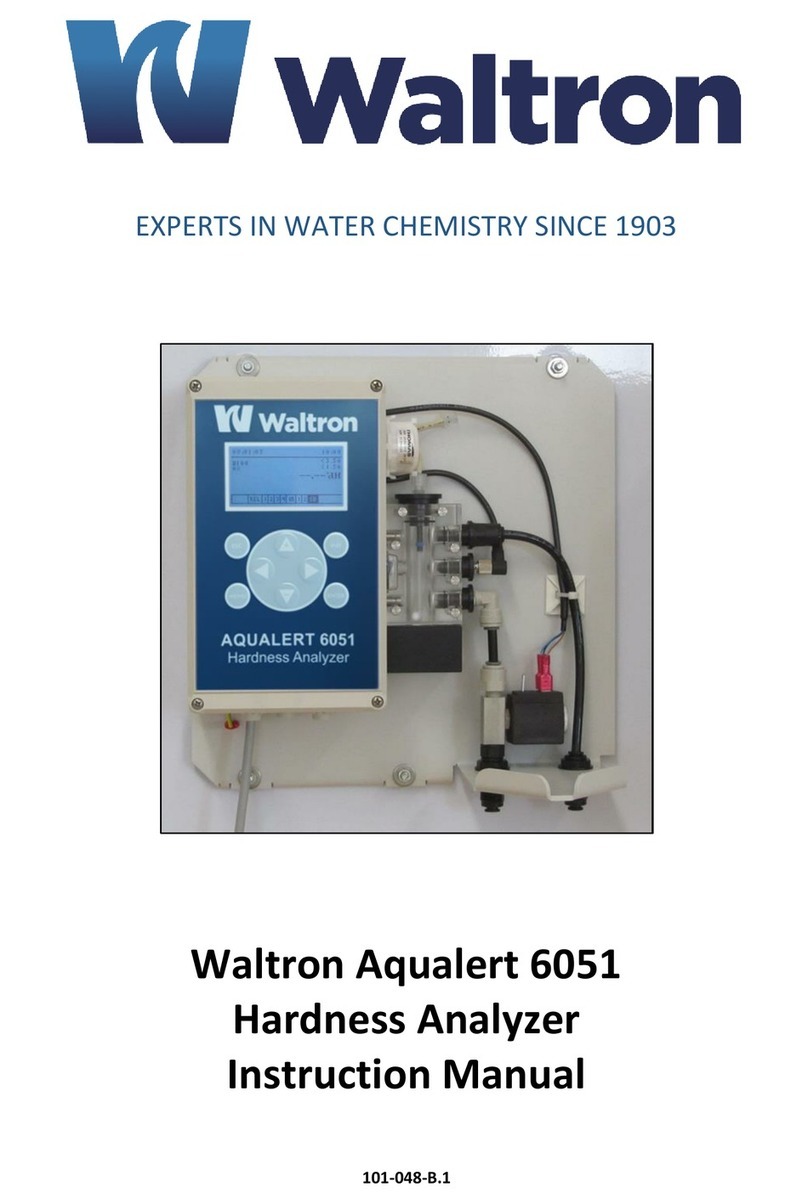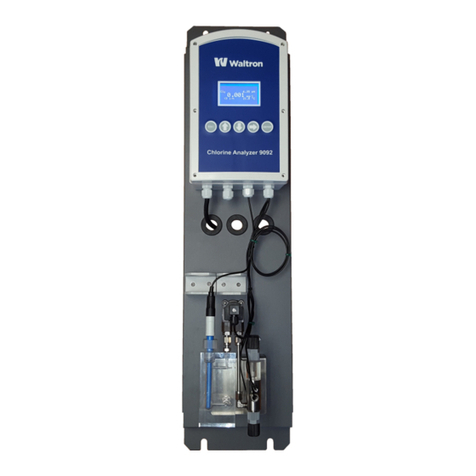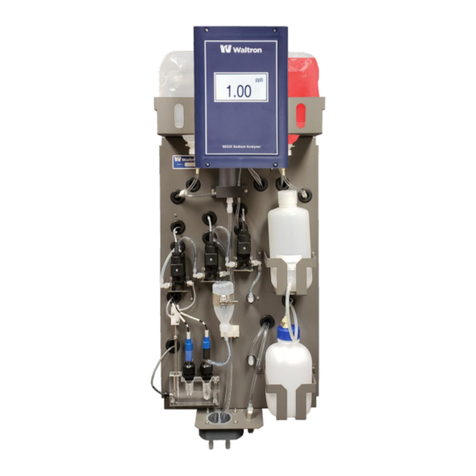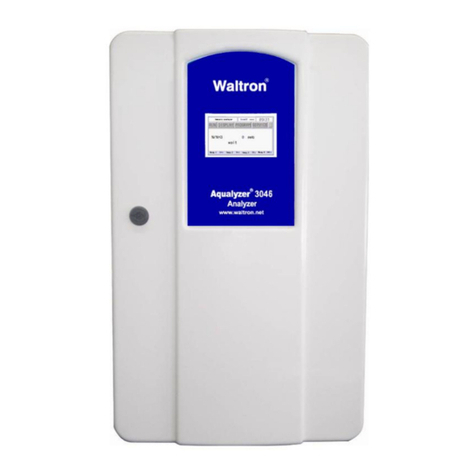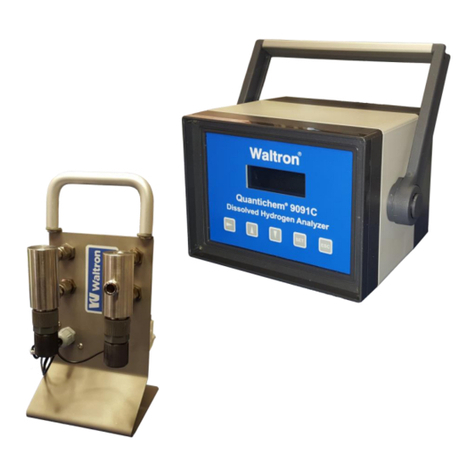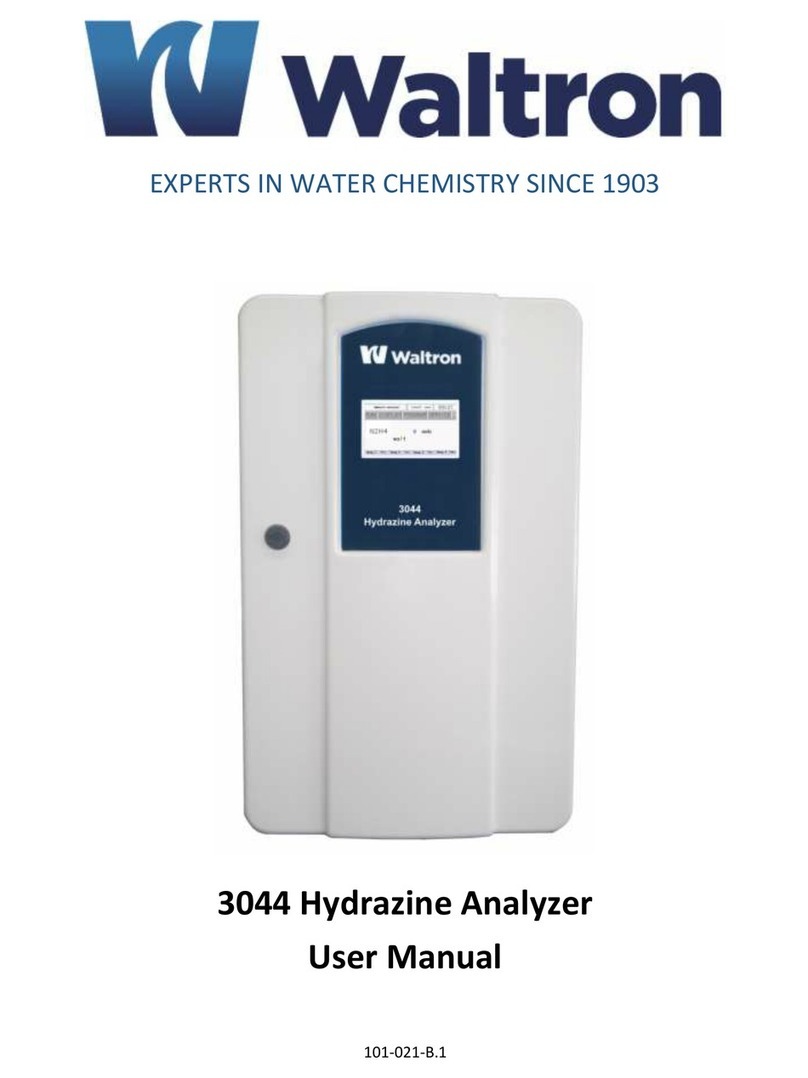
Waltron User Manual 101-024-B.1
3048 Dissolved Iron Analyzer
TABLE OF CONTENTS
Waltron Customer Commitment..............................................................1
Safety.........................................................................................................2
Warranty Agreement.................................................................................3
Checklist of Materials...............................................................................4
Table of Contents .....................................................................................5
List of Figures...........................................................................................7
List of Tables.............................................................................................8
1Overview..............................................................................................9
1.1 Specifications............................................................................................................... 9
1.1.1 Performance......................................................................................................... 9
1.1.2 Sample Operating Conditions............................................................................... 9
1.1.3 Signal Outputs.....................................................................................................10
1.1.4 Operational Calibration........................................................................................10
1.2 Safety Precautions, Instructions, and Hazards............................................................10
1.2.1 General Information.............................................................................................10
1.2.2 List of Warnings and Potential Dangers...............................................................11
1.2.3 Reagents.............................................................................................................12
1.2.4 Sample ................................................................................................................12
1.2.5 Waste Disposal....................................................................................................12
1.2.6 Analyzer General Hazards...................................................................................12
2Introduction.......................................................................................15
2.1 Analyzer Description...................................................................................................15
2.2 Applications ................................................................................................................16
2.3 Working Principle........................................................................................................16
2.4 Analysis Cycle ............................................................................................................18
2.4.1 Programming Commands....................................................................................18
2.4.2 Flow Diagram.......................................................................................................19
2.4.3 Analyzer Operations ............................................................................................19
2.5 Fast Loop Reservoir....................................................................................................20
2.6 Wet-Section Box.........................................................................................................22
2.7 Electronics..................................................................................................................23
3Installation.........................................................................................24
3.1 Receiving....................................................................................................................24
3.2 Analyzer Handling.......................................................................................................24
3.3 Location and Mounting................................................................................................24
3.4 Pre-Installation............................................................................................................24
3.5 Mouting Schematics....................................................................................................25
3.6 Electrical Connections ................................................................................................27
3.6.1 AC Power Connection..........................................................................................27
